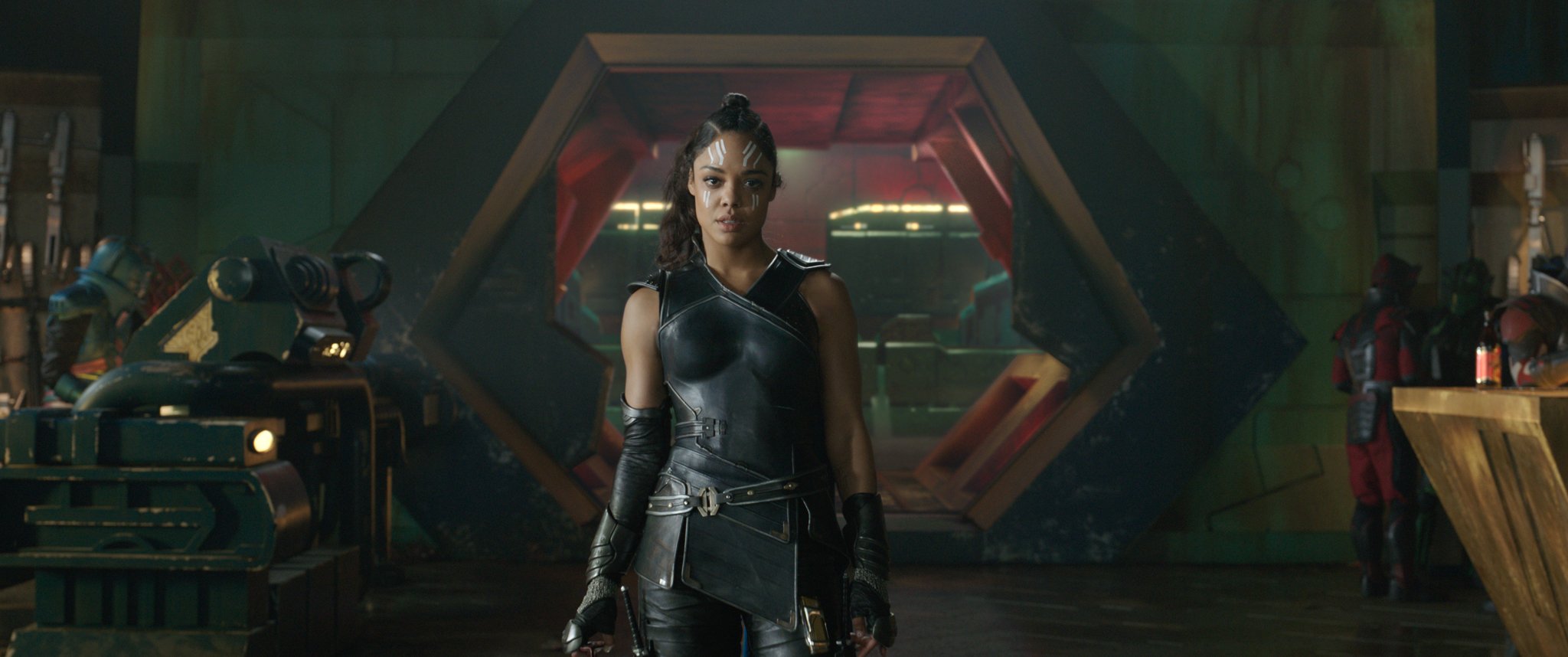My excitement for Thor: Ragnarok grew about tenfold when reports that one of its central characters would be bisexual began making the rounds (admittedly, I already had a soft spot for the muscle-bound Norse god). But that excitement was short-lived as I found myself disappointed and annoyed to find that the one scene confirming the character Valkyrie’s orientation had been left on the cutting room floor.
Valkyrie actress Tessa Thompson, who offers one of the film’s breakout performances, took it upon herself to pitch the character as bisexual, which the producers agreed to. But despite some public hype, her “coming out” scene didn’t make the cut. Admittedly, descriptions of the scene in question (a woman leaving Valkyrie’s bedroom) hardly confirm anything. Regardless, what we’re left with is subtext and the assurance that Thompson acted the part with Valkyrie’s bisexuality in mind.
There are many complex issues to consider here, not least of which is the invisibility of sexual orientation. In reality, we should never assume anyone’s orientation without explicit confirmation one way or another. If Valkyrie is intimate with a man, it tells us nothing, definitively. But Hollywood is founded on a history of heteronormative representation, and it hasn’t earned the benefit of the doubt.
There’s a huge caveat to that, in that queerness has existed on screen throughout history in the form of subtext and audience reading strategies. That’s the foundation that Camp is built on, and it was a clever survival technique for queer screenwriters, directors, and actors to reclaim the screen without risking repercussions. This is all reflected when we queer the machismo of westerns or Roman epics. It’s how Vincent Price and Judy Garland (and the Babadook) became gay icons.
That’s different from studios announcing that a character is queer, though. Most of us knew that Beauty and the Beast’s LeFou was queer. We could feel it, and we didn’t need permission to see him as such. But Disney making it official and actually confirming his love of men onscreen in the live-action remake was meaningful (even if they overhyped and hugely under-delivered on the promise).
Thor could have moved beyond subtext without much effort. A single line or scene would have been enough. And of all the Marvel films, Thor’s fictional universe has always seemed somehow well-suited to a queer reading — if nothing else, the entrance to the hero’s mythical homeworld Asgard is literally a rainbow!
It’s possibly even more grating when you consider how great the film is otherwise. Thor: Ragnarok is quite likely the best Marvel film yet, having the perfect blend of humour and adventure, and achieving a strangely surreal, eccentric, and original take on the character.
That quality is surely thanks in no small part to director Taika Waititi, who put an unconventional indie spin on the blockbuster. The director, whose mother is Jewish and father is Maori, also pushed for greater diversity in front of and behind the camera. Case in point: Tessa Thompson, a Black actress, was cast in the role of a previously white comic book character. “You’ll never look at my films and crew and be able to say, you need more brown people,” Waititi recently told GQ.

Credit: Courtesy Marvel Studios
There was no reason for the film to be disappointing, but the false promise of bi representation left a burning itch unscratched. And this is only the latest such let-down in recent memory. Last year’s Deadpool was similarly touted as making its titular antihero pansexual. You certainly wouldn’t know it from watching the movie, though. He has a girlfriend, but he doesn’t demonstrate any sexual or romantic interest in anyone else. His pansexuality is simply something we have to assume is a reality.
And Harry Potter’s professor Dumbledore, revealed to be gay by author JK Rowling after she had already completed the book series, similarly has yet to be openly depicted as such. Rowling teased that an openly gay Dumbledore would make an appearance in last year’s Potter spinoff film Fantastic Beasts and Where to Find Them, but we were once again left wanting (and waiting to buy tickets to the sequel, because . . . better luck next time?).
It’s hard to assign blame for all of this hype. Thompson deserves major credit for pushing to make Valkyrie bi and media outlets were right to celebrate the possibility of Marvel’s first “openly” LGBT character.
But one party is certainly at fault: film studios that force us to scrounge for scraps. Why was I so excited for a bi superhero? Not only because she would have been the first LGBT character in the Marvel cinematic universe, but because bi characters are so rare in Hollywood altogether. The promise of representation stings so much more when all we get is a combination of vague subtext and offscreen interviews and tweets. You can’t both capitalize on our desire to see ourselves on screen and keep your films free of any recognizably queer content.
(And “capitalize” is the operative word here. Courting queer communities through false advertizing means tapping into a market that could spend its money elsewhere.)
The solution requires purposeful action on the part of film studios. Stop teasing us with innuendo and promises in the lead-ups to your films, and start giving us more openly, visibly queer characters to celebrate on screen.


 Why you can trust Xtra
Why you can trust Xtra


